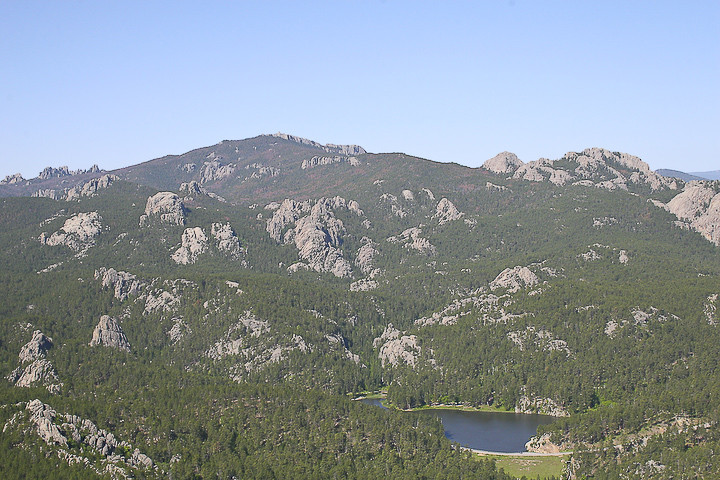 |
| Image Courtesy of Beth Steinhauer, Black Hills National Forest (Forest Service of US Department of Agriculture) under Public Domain |
As you drive west from Rapid City, you notice a jagged stretch of sandstone peaks called the Hogback Ridge. After a short descent from those sandtone peaks, you come to an area comprised of another sedimentary rock, red shale, which makes a "Racetrack" around the Black Hills. If you keep driving west, there is a gradual incline made of limestone. This limestone formed 100-500 million years ago, from the shells of ancient marine animals. (Yes, we are still in the Black Hills of South Dakota.) Keep driving still, past this limestone plateau, and you will see the Central Crystalline Core of the Black Hills. This area is made of schist (a metamorphic rock) and granite (an intrusive igneous rock) that have aged for up to 2.5 billion years. The apparent color of this Central Core and the groves of Ponderosa Pine gave this area its name, the Black Hills. You might want to get out of the car and take a hike up to Harney Peak, the highest peak in between the Rocky Mountains and the Alps of Switzerland.
What are the events that led to the formation of these Black Hills? Why does it look the way it does? Like geologists, we will explore these questions today.
- Write a summary of how the Black Hills formed. What are the events that led to their formation?
- Would the Badlands exist if weathering/erosion had not taken place? Why/Why not?
- The major uplift of the Black Hills occurred 70 million years ago. What do you think that area of South Dakota looked like 40 million years ago? What do you think the Black Hills and Badlands will look like in another 40 million years?






